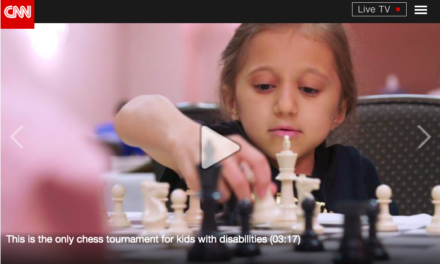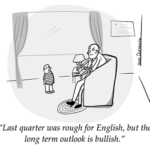At nearly 8,000 words Held Back is a hefty read, much of it taken up with the complicated, frustrating backstory of how Detroit schools got where they are now. But there are some really special moments in the piece, written by Village Voice writer Alexandria Neason, a journalist who does some things and takes us places we don’t often go in education writing.
Now at the Village Voice, Neason has been on the education news radar for two or three years now. You can read Neason’s Slate stories here, or go back and read her Hechinger Report stories here. She won a 2014 award from the Education Writers Association for her piece, Where Have All the Black and Brown Teachers Gone? She also wrote some memorable pieces for Slate like this one about how estimates of teacher workloads may be much lower than is commonly understood.
I had the chance to talk with Neason last week about how the piece came about, what it was like reporting in a town she didn’t know well, and what she was trying to do with the piece.
As she related the backstory of this latest piece, Neason was finishing up her stint as a Teacher Project Fellow when she was approached by an editor at Harper’s magazine about doing a big, historical look at the Detroit school system. She ended up working on the story over the spring and through the summer. She spent about a week there in May – her first time there other than for a journalism conference. Before that, she knew very little about the particulars – nothing more than any other reader, she said.
In approaching the Detroit assignment, Neason didn’t want to cover the same ground that others had already covered. There’s been no shortage of coverage of Detroit from a national perspective, including the New York Times, TIME, and many others. And the issues raised in Detroit — the tension between district schools and charter schools, for example — have also played out in other districts, noted Neason.
But there was still lots of territory left to explore. “The story of Detroit public schools as it was being reported was very much a story of policy and legislation,” said Neason – an important but sometimes impersonal approach. “The policy stories get really wonky.”
“One of the first things I did was to decide that I needed to talk to people, to teachers and especially to families who have some personal stake in the school.”
Neason ended up finding a family that was deeply invested in the success and vitality of DPS, that had graduated from the system in the past. “They were very involved in kids’ education and what they viewed as a fight for the school district.”
“I asked myself, ‘How do I write this in a way that’s beautiful?’, and that can be a challenge,” said Neason. “The heart of nearly education story is people, and I was trying to find a way to write about people that’s really, really beautiful.”
The result is a piece that includes several memorable moments and touches.
The piece opens with an eye-catching sentence: “Three days had passed before I saw a police officer in Detroit.”
Neason describes a gathering to discuss a new plan for the district:
“Dozens of people streamed in — parents, pastors, and youth organizers, many of them public-school alumni. They picked up copies and greeted one another in the hallway. Some looked anxious, others moved like boxers gearing up for a rematch.”
A bit later, she gives lots of room to a high school student speaking at a contentious meeting:
“Just imagine being at a school where your teachers are all sick and tired, and they’re acting like they’re not able to teach because they’re not getting paid for what they do. Just imagine when your teachers say, “I don’t know what’s going to happen to me next year, I don’t know if I can afford my car loan. How can I afford to pay rent, how can I afford to even live with the wage I’m getting?”… There should not be any division. So for me, as a student, to see all our adults act a fool at a public meeting — it really hurts.”
Neason spends time with interim teachers union president Ivy Bailey, including a weekend hair salon visit interrupted by work that I’d venture many education reporters wouldn’t have witnessed or included.
“On Saturday, April 30, [Baily had] dedicated her morning to getting her hair done. She goes to a local natural salon, Locs of Excellence, where her stylist, Shelli, takes care to wash and gently sculpt her dreadlocks from the root with pomade and gel, so they’re neat and frizz-free. Bailey had just settled into Shelli’s chair when her phone rang… Bailey was hearing a new rumor that the bailout wasn’t enough, and teachers on a twenty-six-week pay cycle wouldn’t be paid past June 30 — losing out on salary that they’d already earned. She asked Shelli to give her some time alone.”
Asked about the hair salon scene, Neason said, “Yeah, that’s kind of the thing I was trying to do. We report about education and our stories in terms of setting they often take place in offices of legislators and — for reporters who have the time — schools and classrooms. But people have entire lives that exist outside of this context, and they are all related.”
Invited to the house of the parents who are the center of her story, Neason describes how the parents get their kids up in the morning. One of the parents “walks and talks quickly, often thinking out loud, working through quotidian dilemmas as though she were narrating the story of her life.”
Avoiding the temptation to put the blame on anyone was another goal of Neason’s. “That’s a question that for many people in Detroit important to them — an obvious question that you have when school buildings are falling apart. ‘Who did it?’ The answer to that is always more complicated than identifying one person… As a reporter I don’t think it’s my job to lead any one in any direction.” Instead, her job was to “do the research, report on what has happened, and let Detroiters speak for themselves.”
Along the way, Neason gained an intense appreciation of beat ed reporters, and how important the daily drum of what’s going in the district is. “All of the people I met, they rely on their local newspapers,” she said. “That’s an area that I think is not celebrated enough. I think the local stories are something we ought to celebrate.” (She gives a special shout out to “awesome Detroit Free Press education reporter” Ann Zaniewski. “I can’t sing the praises of beat reporters enough.”)
Sharing skin color with the folks she was interviewing has its pros and cons, said Neason, who is black. “Walking into an all-black school doesn’t necessarily mean that I have everything in common with the people I’m reporting on,” Neason said. “I did go to public schools growing up, but it was very different demographically. It’s important to acknowledge the variety of experiences and backgrounds of people color. I just try to be very upfront about that.” It might be an advantage to look the same as the kids she’s covering in some situations, but “it’s not sort of a free pass.”
In fact, having been a teacher before she became a journalist was as much or more of a help than sharing skin color. “Because I was a teacher, that’s definitely sometimes helpful when I want to go into a school.” She knows when is good and bad to try and reach people. She can make small talk about teaching.
That doesn’t mean diversity in journalism isn’t important, to Neason. “I think racial and gender diversity is an issue across every beat,” she said. “If you walk into any journalism conference and look around the room, it becomes immediately obvious the ways in which the field is homogeneous.”
This is especially true for education journalism.“If you look our cities and the people who populate our cities and our schools, they are diverse. And so the people who write about them must also be diverse… When you’ve only got one type of experience in the newsroom covering such a huge institution [as education], the coverage inevitably becomes narrow.”
Neason’s interests and favorites are eclectic. Like many others, she loved Kathryn Shulz’s New Yorker story about the coming earthquake in the Pacific Northwest, and Larissa MacFarquhar’s piece about Brooklyn hospice nurse.”That was just an incredible story, really sensitively done.” For education writing, Neason admires Nikole Hannah-Jones and describes this Mother Jones piece about black teachers in Philadelphia as “striking.”
Even though she’s not specifically assigned to education in her current gig at the Voice, Neason says she still gravitates towards education stories. “Education is itself a really broad beat,” she said. “Basically everything is an education story.”
ABOUT THE AUTHOR

Alexander Russo
Alexander Russo is founder and editor of The Grade, an award-winning effort to help improve media coverage of education issues. He’s also a Spencer Education Journalism Fellowship winner and a book author. You can reach him at @alexanderrusso.
Visit their website at: https://the-grade.org/













